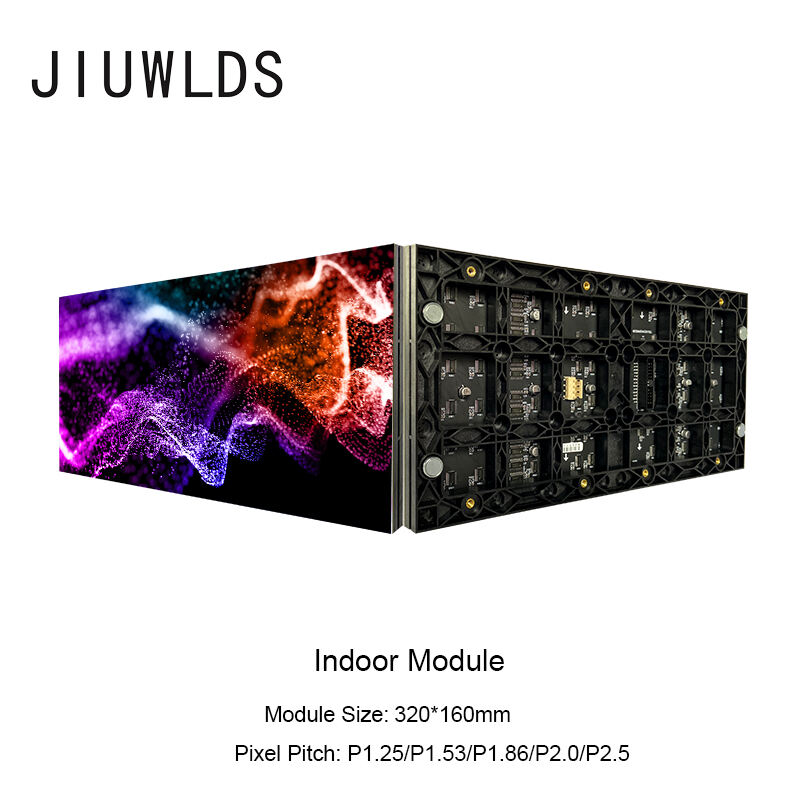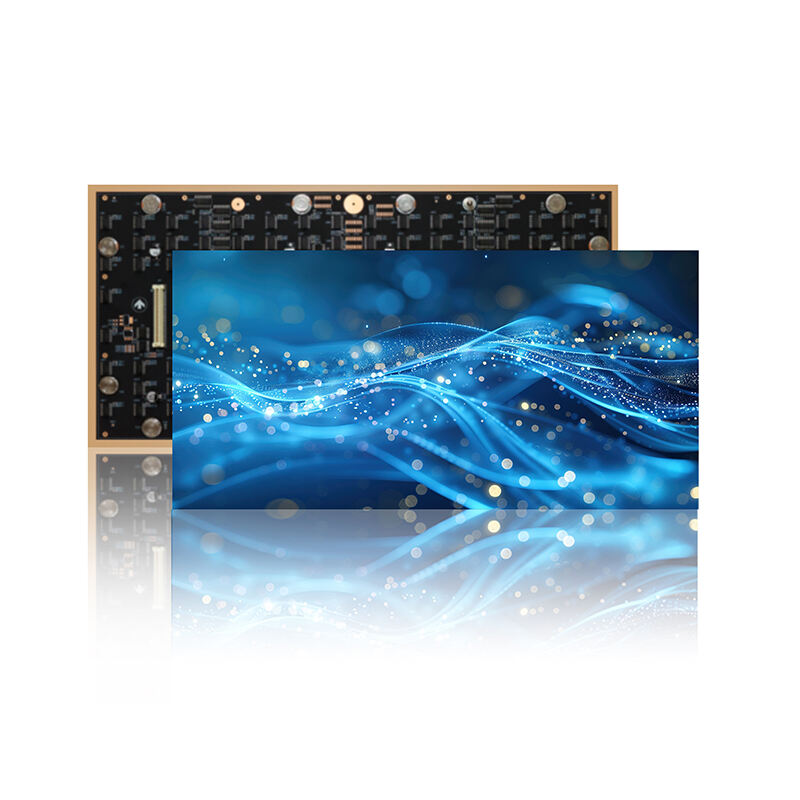Stadium Display Screens: Elevating the Game-Day Experience
The Evolution of Stadium Display Screens in Modern Venues
High-Resolution LED Technology for Immersive Viewing
Over the years, advancements in LED technology have significantly transformed stadium display screens, offering fans an unparalleled immersive viewing experience. High-resolution LED displays provide crystal clear images, enhancing the overall atmosphere of game days and events. Research indicates a substantial increase in fan engagement and viewer satisfaction, as these state-of-the-art screens allow for vibrant colors and intricate detail—a must-have for any modern venue. Leading manufacturers such as Samsung and Daktronics have pioneered these technologies, contributing to the revolution of sports venues by incorporating larger, clearer advertising display screens to captivate audiences effectively.
Pixel Spacing Innovations: 10mm vs. 15mm Comparisons
Pixel pitch, which denotes the distance between adjacent pixels, plays a crucial role in determining the display quality of LED screens. Comparing pixel spacing options such as 10mm and 15mm reveals undeniable differences in visual presentation. A 10mm pixel pitch offers sharper images and enhanced clarity for viewers sitting closer to the screen, allowing a more detailed perception from a shorter viewing distance. Conversely, 15mm spacing tends to be utilized for larger venues where screens are viewed from farther distances. Studies show that optimizing pixel pitch can greatly improve visibility, as seen in case studies of various stadiums that have successfully employed these strategies to enhance audience experiences. When choosing between these pixel spacings, the venue's dimensions and viewer positioning are key considerations for optimal image quality.
Real-Time Stats and Replay Capabilities
Real-time statistics and replay capabilities are revolutionizing fan engagement during live events. When fans are able to access live updates and statistics directly on stadium screens, it enhances their interaction and enjoyment, creating a more immersive experience. According to a Sports Video Group survey, stadiums that integrate real-time stats and replay features report up to a 35% increase in viewer satisfaction. Technologies like touchscreen shows are instrumental in facilitating these capabilities, allowing fans to replay critical moments and examine the in-depth stats that matter most to them. An example of such implementation can be seen in venues utilizing Daktronics display systems, which combine dynamic content with replay capabilities to boost the overall fan experience during sports events. These technological advancements not only keep fans engaged but also encourage them to interact more during games, sharing their excitement with others.
Social Media Integration via LED Ribbon Boards
LED ribbon boards integrated with social media feeds have become a pivotal aspect in enhancing fan interaction in stadiums. This integration allows fans to see live social media updates and posts across the stadium screens, thereby enriching their live experience. Case studies, like the successful campaigns at Iowa State University, demonstrate how ribbon boards showcase real-time social media content, consequently increasing fan engagement levels. Social media integration promotes interaction by encouraging fans to share their game-day experiences on platforms like Twitter and Instagram, boosting live sharing and audience participation significantly. By leveraging these innovative integrations, stadiums can create a dynamic environment where fans feel more connected to the sporting action and more motivated to engage with fellow spectators both in the venue and online. Such initiatives empower fans to be part of the conversation, enhancing the overall social atmosphere within the stadium and beyond.
Case Studies: Stadium Display Success Stories
Auburn University’s Dual End Zone Video System
The dual end zone video system at Auburn University's Jordan-Hare Stadium has significantly boosted the game-day experience. This cutting-edge system, installed by Daktronics, features a massive north end zone display measuring 45.5 feet high by 155.5 feet wide with a 10-millimeter pixel spacing. Such dimensions ensure heightened resolution and vibrant imagery, captivating fans throughout the stadium. In feedback post-implementation, many fans expressed increased engagement and satisfaction with their viewing experience. Auburn's Deputy Athletic Director, Rhett Hobart, emphasized that this innovation elevates the visual production quality, thereby enhancing accessibility to engaging video and graphics content. Setting a new standard, this system employs advanced control mechanisms for seamless content delivery, offering a benchmark for other universities seeking to amplify stadium experiences.
Baylor’s 8,000-Sq-Ft Outdoor Advertising Display
Baylor University’s McLane Stadium showcases a remarkable 8,000-square-foot outdoor advertising display, consisting of seven innovative LED displays from Daktronics. These installations serve both game-day excitement and advertising purposes, boosting exposure for sponsors and generating substantial revenue streams. The primary video display, noted for its improved resolution, captivates audiences both inside and outside the stadium, enhancing the overall atmosphere. Advertisers have noted an increase in brand visibility and engagement, praising the display’s capacity to engage a wide audience. Such positive feedback highlights the economic impact of this installation, making it not just a visual upgrade but also a strategic asset for revenue generation.
Samsung’s Anamorphic 3D Tech at Citi Field
Samsung’s deployment of anamorphic 3D technology at Citi Field stands as a revolutionary upgrade to traditional displays, creating an immersive visual experience for fans. This technology, distinct for its 3D illusions without the need for special eyewear, sets Citi Field apart as a beacon of innovation in stadium technology. Enhanced engagement metrics following its introduction underscore its effectiveness in captivating audiences. The seamless integration of this technology into the stadium's fabric elevates the viewing experience, offering thrilling visuals that outshine conventional displays. Such advancements not only redefine fan engagement but also pave the way for future technological implementations across other stadiums globally.
Beyond Sports: Multi-Purpose Use of Stadium Screens
Concert Visuals and Event Branding Opportunities
Stadium screens have become integral to concert experiences by enhancing visual elements and dramatically elevating audience engagement. A well-coordinated visual display can transform a live performance into an immersive spectacle, adding layers of creativity to a band's music and message. One memorable example is the innovative use of LED screens during U2's "360° Tour," where the visuals became part of a dynamic, all-encompassing fan experience. These event-branded visuals not only captivate audiences but also offer lucrative financial returns by expanding the range of events a venue can host. With the ability to support varying content and branding strategies, stadiums can attract more and diverse events, ultimately increasing revenue through ticket sales and sponsorships.
LED Display Rentals for Temporary Installations
Renting LED displays for temporary events has become increasingly popular due to its numerous advantages for venues and organizers. By opting for a rental, event coordinators can provide cutting-edge visual experiences without the hefty costs of permanent installations. The LED rental market is witnessing remarkable growth, driven by demand from concerts, festivals, and pop-up venues that require dynamic and scalable display solutions. According to industry reports, the market is expected to grow at a compound annual rate of over 6% by 2028. High-profile events like the Super Bowl Halftime Show often rely on rental LED screens to achieve dazzling effects without long-term commitments. This trend underscores a shift towards flexibility and innovation, enabling events to use advanced display technology tailored to their specific needs.
Future Trends in Stadium Display Technology
AI-Powered Dynamic Content Zoning
AI-powered dynamic content zoning is revolutionizing how stadium screens present content to audiences. These advanced systems customize advertisements and visuals based on real-time analytics, adapting to the preferences and behavior of spectators. For instance, AI technology can tailor marketing messages to different audience segments during live events, significantly boosting viewer engagement and advertising success. According to experts, this technology can transform the advertising landscape by providing more personalized and compelling experiences for viewers. Upcoming sporting events can leverage these capabilities, offering advertisers innovative strategies to optimize their marketing approaches.
Energy-Efficient Outdoor Advertising Solutions
Innovations in energy-efficient display technologies are essential for aligning outdoor advertising with sustainability goals. Modern stadium screens incorporate energy-saving features that significantly reduce electricity usage without compromising image quality, thereby minimizing environmental impact. These advanced displays contribute to lowering carbon footprints and supporting sustainable practices in advertising. Collaborations between technology providers and venues, like partnerships with Daktronics, ensure that new installations focus on enhancing energy efficiency. As venues prioritize sustainability, embracing these energy-efficient solutions is vital for future growth and operational sustainability in the advertising domain.







 Hot News
Hot News